Battle of the Bugs: Lady Bugs vs Aphids or How Not to Deploy Beneficial Insects - Learn From My Mistakes!
Gather round readers and let me tell you of an epic battle that I was witness to about a year ago. It's a tale of small creatures with large appetites, so large that they can eat you out of a greenhouse!
The Battlefield
The location, as you may already know, was our greenhouse where we grew hydroponic tomatoes and cucumbers. This location was not new to insect infestation. We had grow accustomed to battling Russet mites on a regular basis, but this fight was against a new enemy!
The Bad Guys
Having fought the dreaded, but slow, russet mite for several years now, I thought I had a decent handle on pest management, boy was I wrong. No the mites were not the problem this time, this time it was Aphids. The monster we were facing this time was a little bigger than our regular sparring partner, russet mites are a wee little booger, you really only notice them when your plant has taken on a sudden brown rusty look, hardly even noticeable! These aphids though are quite a bit larger, still small in the world of insects, but large enough to be seen with the naked eye. They multiply faster than rabbits, and suck the life giving juice from the plants that they inhabit. There waste product known as "honeydew" will also drip down on any lower leaves and form a stick coating which will choke out the leaves if enough of it gets on them. Yep, these things are nothing but bad for plants.
As you can see, they will take up residence on every square inch of a leaf under surface if left to their own devices. The was going to be a battle for the ages!
Our Heroes
Now in conventional grown crops, these bugs would have been stopped long before this stage. They would have been stopped in their little six footed tracks by any number of pesticides, but we don't roll like that. We have always tried to keep as close to organic practices as possible in the greenhouse, and lets face it, it is much more work to keep pests at bay using these methods. But back to our heroes!
The sweet looking Lady Bug, sometimes called Lady Beetles, are not really all that sweet. Lady Bugs are predators and damn fine ones, and the top item on their list of prey is... You guessed it, Aphids! They will eat aphids until they can't eat another juicy bite, then they will lay eggs and hatch out the most alligator looking larvae you have ever seen, which will eat as many aphids as it can until it reaches breeding age, then the cycle begins again. The cycle take roughly a month to complete.
The Battle Begins
Our fight started after I noticed several aphids on a cucumber plant, as I looked further up the row I noticed more and more plants held the little beasts. I sprang into action and placed an order for 18000 Lady Bugs with a reputable supplier and was told the would ship out as soon as the army was ready, that plus two days of shipping was already putting me behind the eight ball, alas I was at the mercy of mother nature and the US postal service. I think it was about four days later when our heroes arrived, fresh, vibrant and ready for battle!
I opened up the bag and deployed our forces, they wasted no time seeking out the soft bodied devils that were dug into their defensive positions! Well I shouldn't say that, it was more like releasing a lot of hungry wolves into a pen of sheep. the aphids really have no defense against the lady bugs...except their numbers. The lady bugs were way out numbered, I don't even want to throw out a guess as to how many there were.
The Lady Bugs were putting in a valiant effort, but everyday I would see the aphids progressing high up the vines and spreading to more plants. In a week or so the lady bugs were preparing reinforcements, eggs were being laid at a breakneck pace, everywhere I looked, small yellow eggs bundles were popping up.
Never saw a soldier that didn't need a little boom boom now and then!
This photo shows the vast numbers the lady bugs were up against, it also shows the damage that occurs from aphids and the "honeydew" drops that are beginning to cover the leaf. It's a bad sight all the way around!
The yellow eggs were dropped right on the enemies back door, behind the lines so to speak, now it's a waiting game.
You can see the live aphids, they are darker in color as well as the molt from the aphids, the white spots. The molts are from the aphids life cycle as they shed their outer skin as they grow. This is another tell tale sign to look for when checking your plants.
Soon the backup forces started to arrive and lay waste to the invaders, the lady bug larvae are eating and eating and eating some more!
And growing bigger!
You can see the damage to the leaves in the last two photos, they begin to yellow from not getting the nutrients they need and after that it's pretty much the end of that leaf, they will turn brown and crispy.
The Winner Is?
Well if you have been following me, you already know! The lady bugs won many hard pitched battles, but they lost the war. Well not really, they ate like kings and had many generations of warriors! We lost the war in terms of crop loss and time spent trying to replant and losing again. In the end that was the end for us, after loosing income from our markets that put the nail in the coffin. Will we be back? Maybe someday!
So What's the Moral of this Tale?
Hopefully I can give you growers a little advice on your crops.
1. Keep a close eye on your plants!
If we had caught these a aphids a lot sooner we may not have been in this pickle. I got busy with all the things I had to do that I never stopped and checked for insects, I was also used to Russet Mites that take longer to completely take over a plant, so I thought I had more time to deal with these monster!
2. If you are going to use beneficial insects, deploy them before you see a problem, not after you are loosing plants to pest pressure.
Deploy your beneficials as soon as you put your plants in, just keep the population in balance so they won't leave you place and head off looking for food.
Let's face it, bugs are bugs, they don't care if they are saving your greenhouse/garden or not. they are there to complete their biological programming. Eat, Breed, Reproduce. They did what they are made to do, we have just found a way to make them beneficial in that they do what they do, in a place where we need them to do it. They are not miracles, and I knew that, so the fault lies with me.
I hope this will help out another farmer/grower in their endeavors, keep up the good fight and keep growing that good stuff!
Thanks for Looking!
@papa-pepper made this cool pic for me, follow him and check out his great articles!
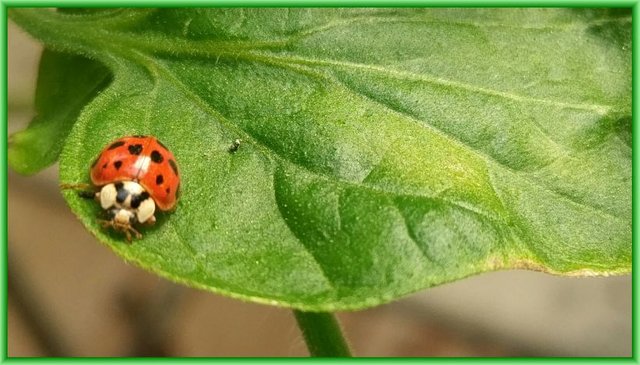
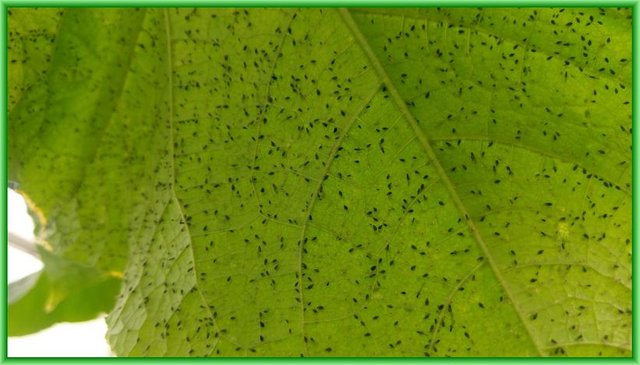
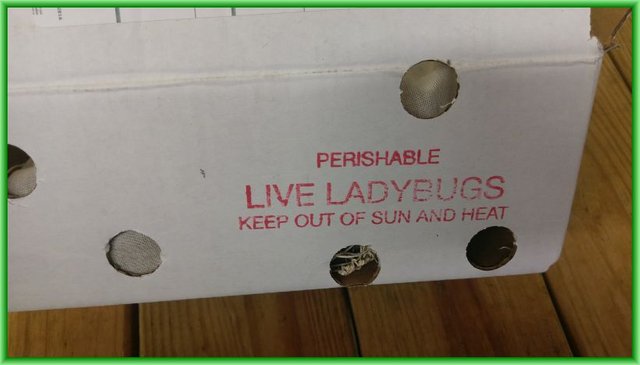
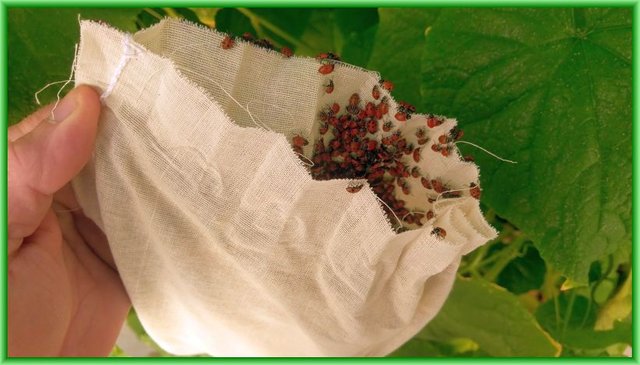
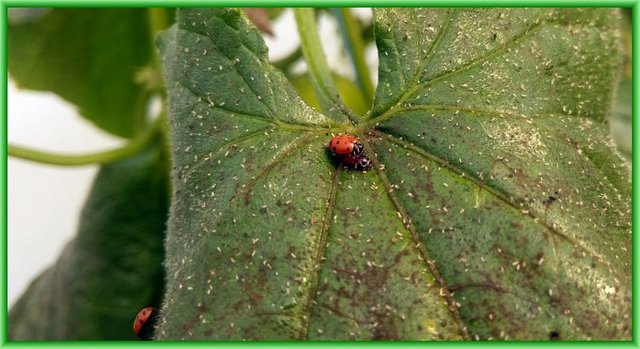
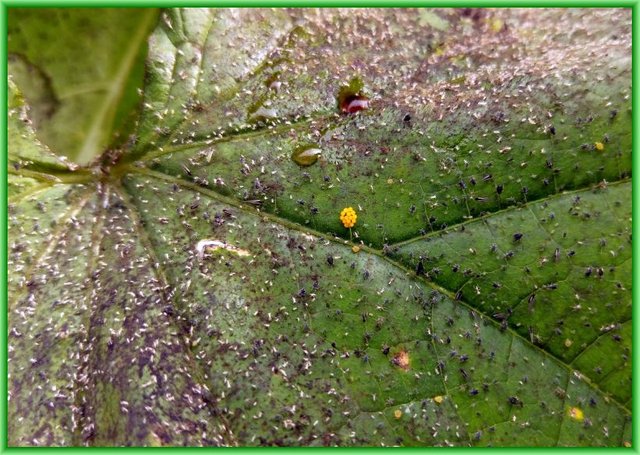
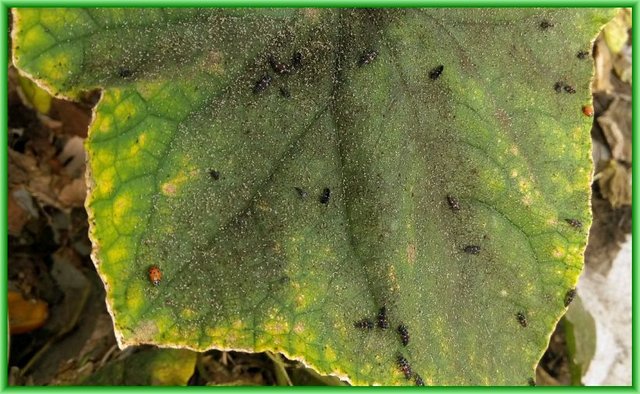
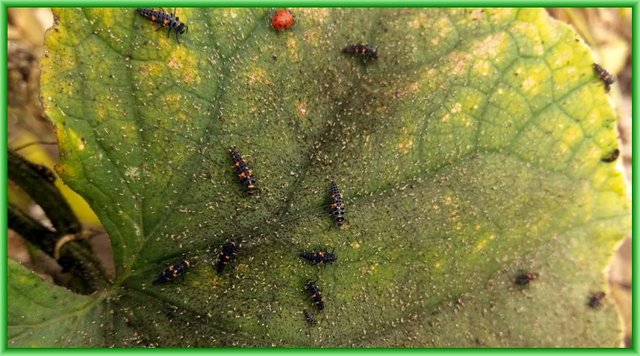

ohhh very creative blog..thanks !!
Thanks!
Well done on not resorting to chemicals, you are a true farmer! When I was a kid a ladybug bit me, since then I have always been wary of them (they're not as ladyish as they seem, which you have just confirmed)! Have upvoyed and resteemed. Much love, @sweetpea
Yep, their cuteness hides the fact that they are an insect serial killer on the level of Hannibal Lechter!
Thanks @sweetpea !
Well done and some great pictures, I grow tropical bonsai and can attest on just how fast it can wipe out a greenhouse full.
Yep, the greenhouse is like a perfect storm for bugs!
I tend to procrastinate on this kind of action until I get the little life lesson. Good reminder and great pix.
Gosh, not only is this a brill story, you reminded me of a time when I was very little and I decided to collect ladybirds... in my hand. I kept putting more and more into my little closed hand, and eventually when I opened my fingers up I had soooo many swarming on my hand that I totally freaked myself out ha!
Cheers! Upvoted and followed!
I know what you mean, When I turned them loose I had about a hundred of them crawling on me , creepy feeling!
I remember your name in peppers. I also remember this epic battle.